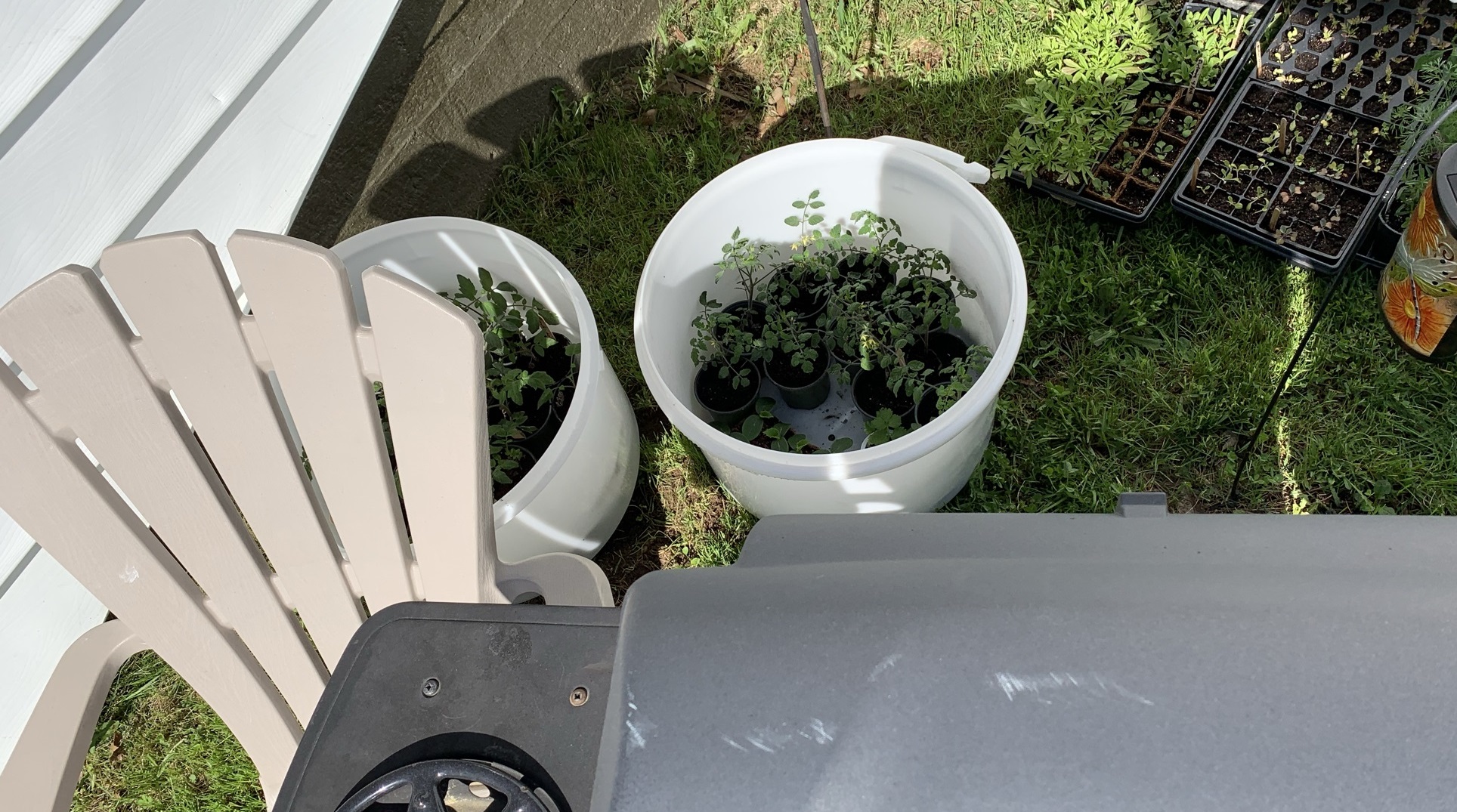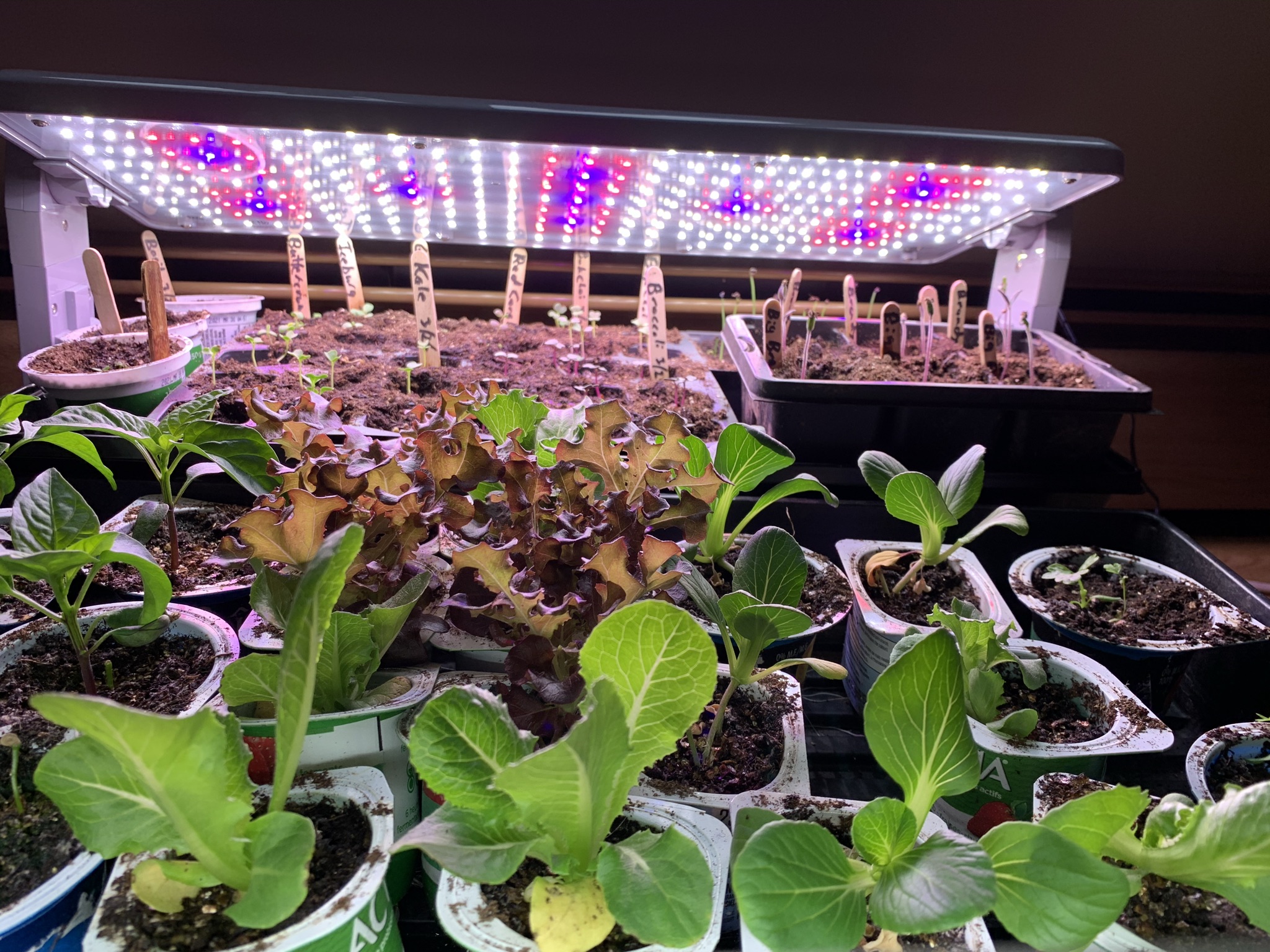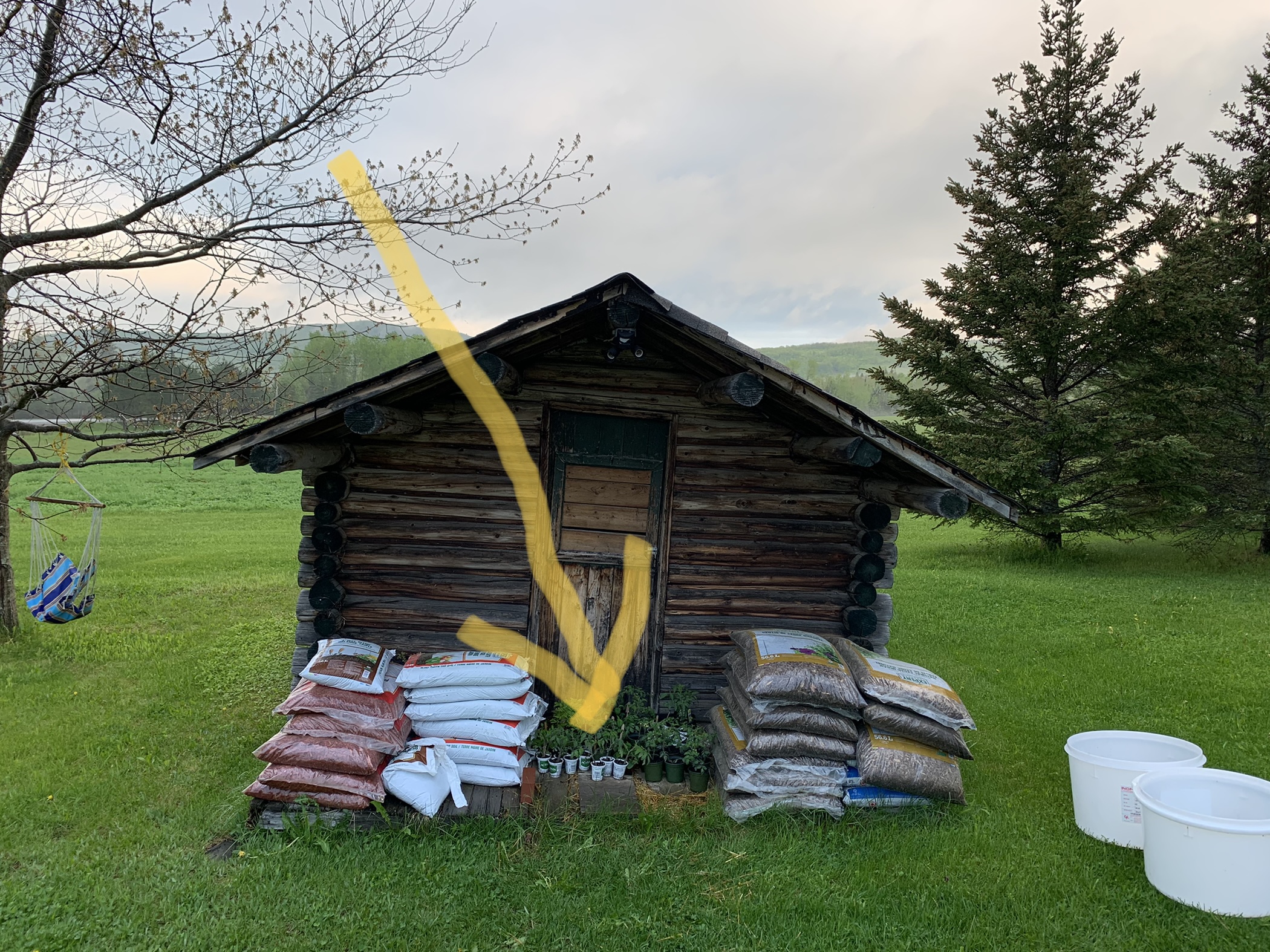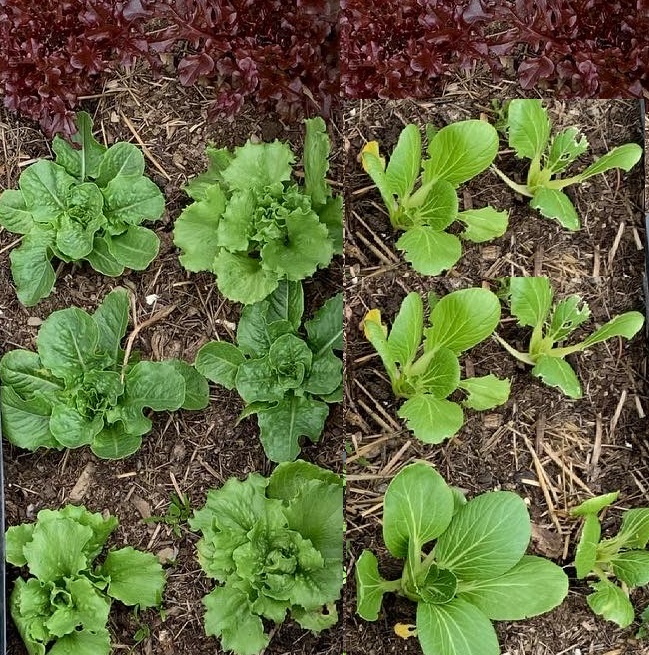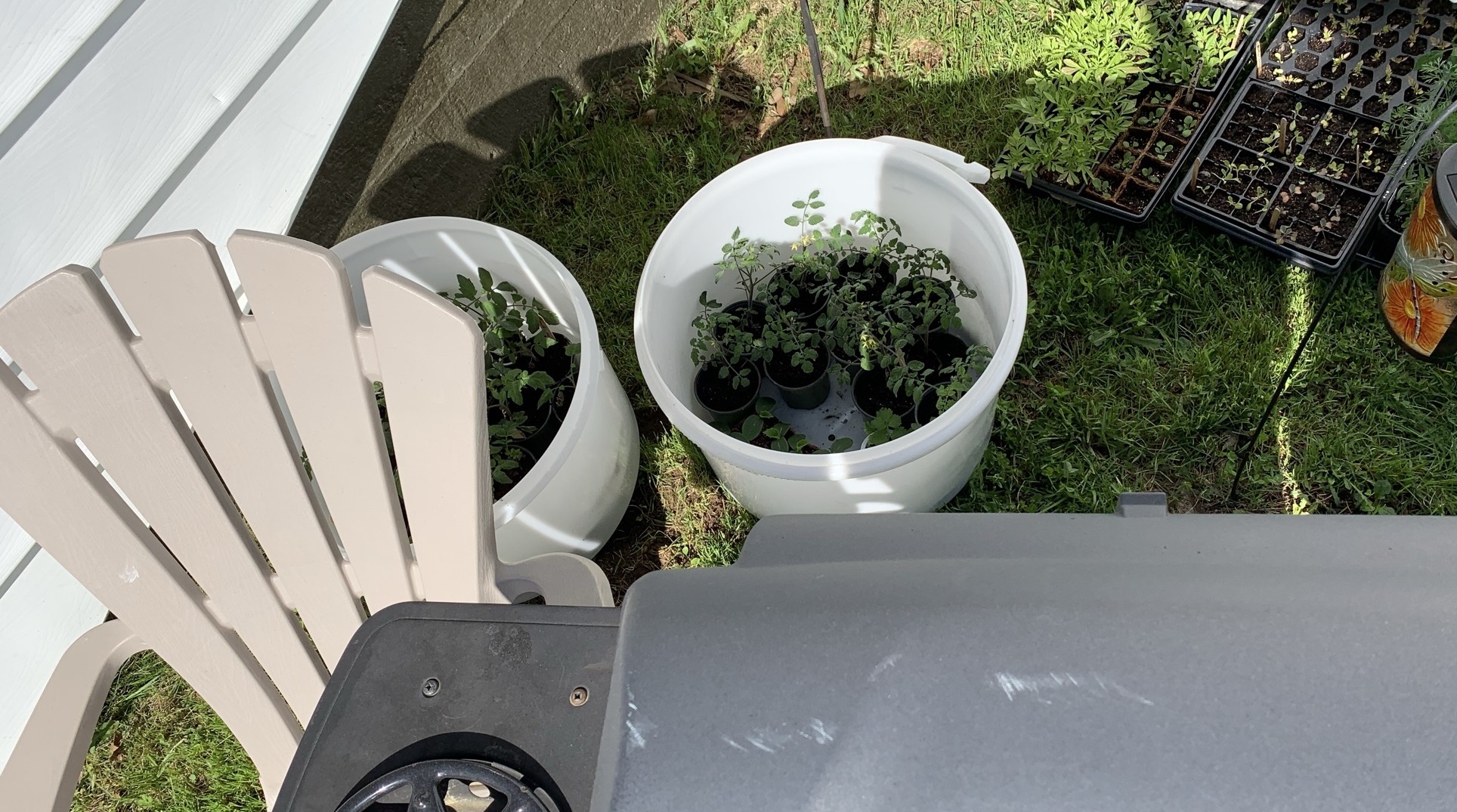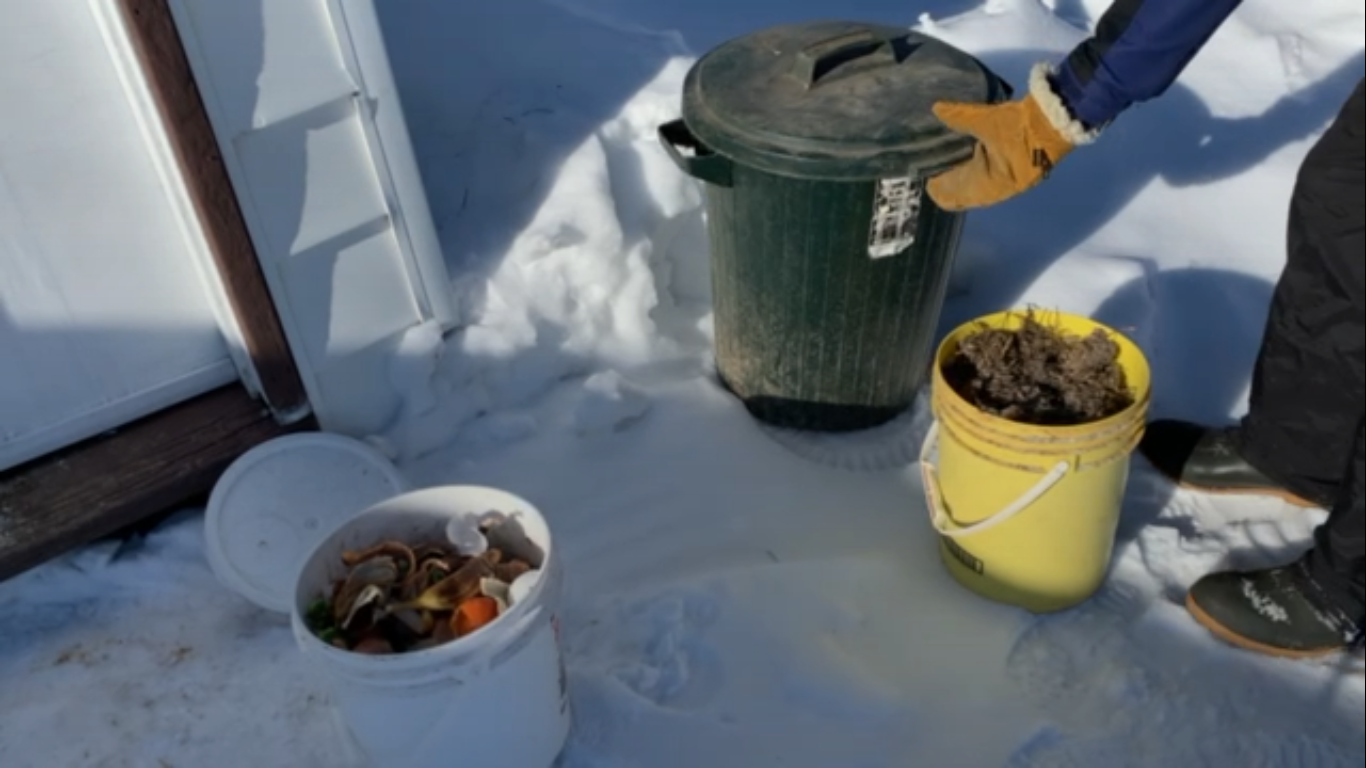Effectively hardening plants off
while holding down a day job
Have you ever been tempted to skip the process of hardening plants off before setting them out in your garden? Please do not!!!
I know. You are busy and it is getting late in the season, and you want to get that stuff planted. Yes, hardening seedlings will add extra time to the process, but it is time that you will be glad you spent.
“So why is hardening plants off necessary?” you ask. Well, you, or the nursery where you bought the plants, have probably raised those seedlings under carefully controlled conditions with grow lights, careful watering, and a well-controlled temperature.
As you probably realize, variations in outdoor temperatures, moisture level, and wind conditions can be a big shock to your plants.
What you may not realize, is the big shock that outdoor light conditions are to your plants. Even the best grow lights, or indoor windowsills, cannot approximate the harsh effect of direct sunlight on your unaccustomed plants.
To put it plainly, plants that were started indoors must GRADUALLY adjust to outdoor conditions.
The ideal way for hardening plants off
The ideal process of hardening plants takes 7 to 10 days. On day one, you set the plants out in a shaded, sheltered spot for about 30 minutes. The next day you put them out for 60 minutes, then the next day for 90, and so on until they get used to outdoor conditions.
After you have had your plants out in the shade for a few times, you will want to gradually expose them to more direct sunlight and wind conditions. Of course, your plants are probably still in relatively small containers and they will tend to dry out rather quickly so be prepared to water often.
Hardening your seedlings if you can't be at home
For many of us the ideal plant hardening process just will not work because gardening is a part-time hobby while we work a fulltime job. So, we must get creative.
Here are some things you can do to improve your plants chances when you cannot be home to baby them through the hardening off process:
1. Give them as much light as possible the whole time they are growing indoors.
2. Have a fan blowing on your indoor plants or brush your hand across them occasionally to get them used to moving air currents.
3. Even when seedlings are too tiny to transplant outside, take advantage of any nice days that you are home to set plants outside for a little while. (Hardening off days do not have to be consecutive.)
4. As it gets closer to hardening off time, begin to reduce watering. Your plants need to get accustomed to drying out conditions.
5. Take advantage of a long weekend to begin the hardening off process. Try to find a nice shaded sheltered spot and cheat a little bit on the clock by leaving the plants out a bit longer than recommended. Then put them back under the grow lights in their safe space for a rest.
6. The first few times that you leave your seedlings outside unattended while you are not at home, find a side of the house where they will get no direct sunlight and shelter them from the wind. Try to find a nice level spot and set them in a tray with some water.
Bottom watering, especially for very small seedlings will protect them both from drying out and from damping off diseases.
7. Once your plants have spent a few warm days in the shade, find a spot with dappled shade, maybe under a deciduous tree or behind a strategically placed lawn chair or barbecue.
8. Find a spot that gets direct sunlight for a few hours early in the morning or late in the day but is shaded during the middle of the day when the sunlight is most intense.
9. If adverse weather is forecast for when you can't be at home, make sure your seedlings are well sheltered.
10. Gradually get your plants used to full sun and windy conditions.
11. If the nights are warm enough, start to leave the plants out overnight.
Even after your plants are hardened off, it is best to transplant them in the evening, ideally before forecasted overcast or cloudy weather. Make sure to water your plants adequately after they are transplanted.
If no clouds are in the forecast and you absolutely must get your seedlings in the ground, provide shade with a cardboard box, shade cloth, or some other improvised structure for a few days until your seedlings are established in their new home.
Hardening plants before transplanting may seem a bit tedious but it is worth the effort. After all, you have put a lot of effort into starting these seedlings or spent money buying them and you want them to succeed.
